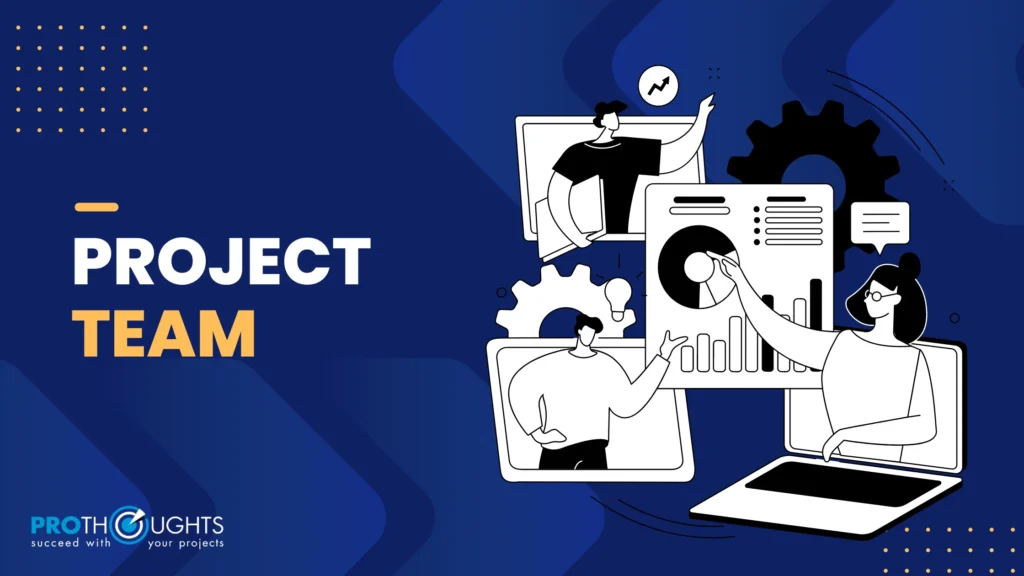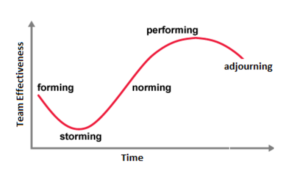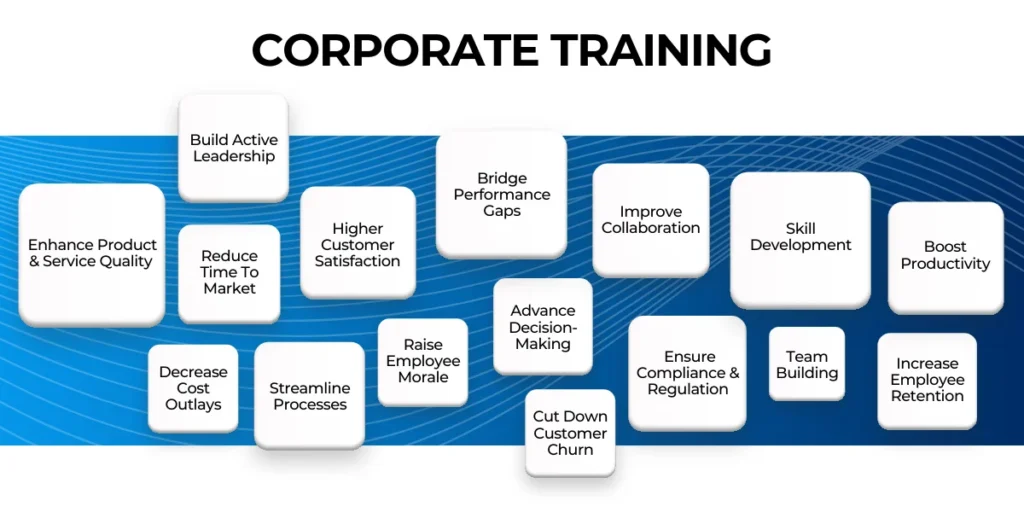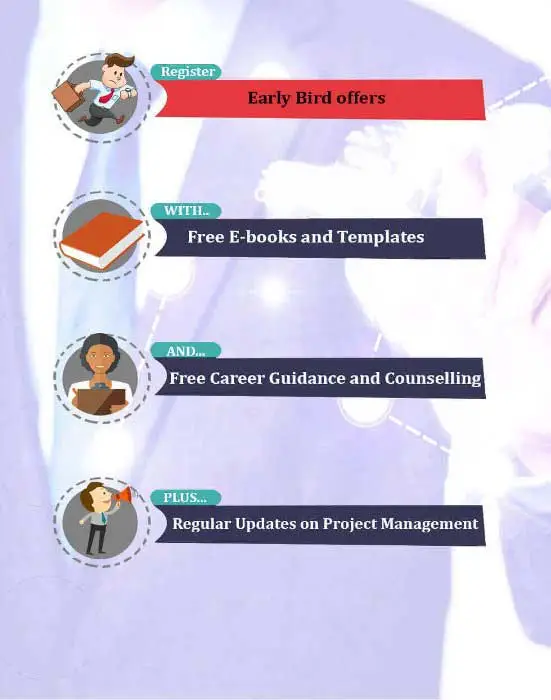Every successful project requires a team that works together and complements aspects of one another. Simply bringing a group of people together isn’t enough. Building the the right project team requires picking the right people, from the right domains, and placing them well in the project team structure. Moreover, you need a project team leader or a project manager to proactively guide this team.
So, what does it take to build high-performing project teams? How can project managers assemble a project team that makes all the difference? Let’s find out!
What is a Project Team?
A project team is a group of people who come together to work on an initiative. Usually, these teams are cross-functional and each team member brings a different set of skills to the team. These skills combine together to derive a common goal – effectively and efficiently.
In any project, when the appointed group comes together, it is not a team in the initial phase. It is just individuals assigned to carry out work together. A project manager plays a key role in polishing them into a project team. They build the team, lead the team, and create the right team structure. Plus, they ensure that every team member has clearly defined roles and responsibilities and has the right opportunities. With these actions in place, the team members get to know each other, get an idea about the assigned tasks, and understand how to coordinate work together.
As far as an effective project team is concerned, all team members must work together to contribute collectively. However, this does not happen right away. The project manager must put in effort and the best of their project management skills and experience to achieve it. Let’s see how a project manager can bind a team together in the next section!
Project Team Formation and Development
The process of learning to work together effectively is known as team development. While working on the project, every team goes through different stages of team formation and development. As per Dr. Bruce Tuckman, the team working on every project goes through various stages of development before it becomes effective, productive, and high-performing. These stages of team formation are, Forming–Storming–Norming–Performing–Adjourning.
Forming: In this stage, team members meet, exchange introductions, and the project details are shared, and responsibilities are structured. In this stage, the effectiveness is on the lower end because the teams are not cohesive yet.
Storming: This stage is where the conflict begins. Here, conflicting practices, behaviors, and working habits collide causing a disruption in the teams. This is a natural part when new people come together as a team and productivity is at its lowest in this stage. However, the project managers can ease the tension by facilitating communication, managing competition, and finding solutions to problems.
Norming: In this part of team building, teamwork improves and members share ideas and feedback efficiently. There is no longer conflict that disastrously affects the course of the project. The project team gets used to one another, and the overall performance begins to rise.
Performing: In this stage, the performance is at its peak. Teams work cohesively and efficiently with minimal oversight and have strategies for resolving issues without delaying progress.
Adjourning: This is the final stage of team development. Projects are completed, and teams debrief on successes and improvements before moving on to new projects. Celebrating the project wins, reflecting on the the journey of the project team, and building lasting connections with the team members are all part of the Adjourning stage as per Tuckman.
How To Build An Effective Project Team?
In any project, a well-developed team can do miracles under the guidance of the project manager who is proactive and collaborative in nature. To build an effective project team the following 5 things are essential.
- Set up a Strong Leadership
- Clearly Defined Roles & Responsibilities
- Open and Clear Communication
- Conflict Management
- Rewards and Recognition System
1. Set Up a Strong Leadership
To build an efficient team, it is necessary to learn how to be an effective project team leader. A project manager can influence the people who report to them by being a great motivator, a diplomatic liaison, an adaptive leader, and a passionate colleague. These project manager skills help build a high-performing team.
The project team leader must establish firm leadership by building relationships of trust and loyalty, rather than fear or the power of the position. You need to be involved with the team and their day-to-day activities. Moreover, in the event that any problem arises, you need to step in and address the problem proactively as a leader.
Also Read: The Starting Point for Effective Project Management
✍️ Tips to Establish a Strong Leadership for your Project Team:
- All decisions taken by the project manager must be transparent and should be conveyed to each team member promptly.
- The project manager should allot tasks and responsibilities as per the team charter. It is one of the prime roles and responsibilities of the project team leader to properly distribute tasks. They must ensure to not overload some individuals with too much work while leaving other members with less work and more free time.
- The project manager should communicate goals clearly to the project team. You should also keep in check that the team works to match it and doesn’t stray away from the goal.
- To establish strong leadership, you must focus on how to motivate your team as a project manager. It’s the team lead’s responsibility to ensure that the team isn’t overworked, demotivated, or indifferent to the project goals.
- Leadership does not mean imposing authority in an unauthorized way. Rather, it stands for the development of trust in a transparent and honest way. To achieve this, the project leader should be approachable to each team member and be present to promptly resolve any arising issues.
- As a leader, the project manager must be honest and friendly with each team member to an acceptable extent. This will encourage all team members to accept and follow the leadership.
2. Clearly Defined Roles & Responsibilities
Clearly defined roles and responsibilities help teams know what they are doing, why they are doing it, and how it is contributing to the project’s success. Thus, the team lead should define and assign roles and responsibilities for project team members in a clear fashion.
When a project experiences conflict, it is often due to unclear project team roles. Each team member can manage this conflict by identifying, clarifying, and agreeing on their individual responsibilities. This ensures a clear understanding of how they will achieve the team’s goals. Once team members are comfortable with their primary project management roles in the team, they can better understand the part they play in team meetings.
To have clearly defined project management team roles and responsibilities, a team charter and some ground rules can come in handy.
Create a Team Charter:
For each team member to have clearly defined roles and responsibilities, it is important to create a team charter. The team charter describes the project management approach the project team will take regarding communications, decision-making, and conflict resolution. Additionally, the purpose of the charter is to define project team roles, goals, deliverables, project team structure, and any other items that the project manager thinks the team members must be aware of.
Set Ground Rules:
Setting ground rules can help to eliminate conflicts or problems within the team. Moreover, if team members have input on the creation of the ground rules, they’re more likely to follow them. Ground Rules may be related to how members can communicate, how they can establish and meet deadlines, and how they handle obstacles. These rules can and must be flexible based on team needs. Establishing ground rules within your team can improve work quality by fostering open communication, ensuring professional behavior, and treating all team members equally and with respect.
3. Open and Clear Communication
Open and clear communication is the backbone of a high-performance team. To lead a project to success, it is necessary to create an environment that fosters it. Open communication allows team members to become more engaged and understand their part in achieving the project’s goals. This understanding helps them realize the reasons behind decisions and their impact on the team and the project as a whole. Effective project team communication aligns everyone, moving them in the same direction toward the common goal.
Effective communication may seem simple, but it requires immense effort. It is important for the project manager to convey the overall goals to the team members. The teams do this through routine discussions and meets. Additionally, when issues arise, they should address them immediately together as a team.
Moreover, the achievements of a team or individual should be recognized directly and publicly so that everyone is made aware and can participate in the celebration. Creating such an open environment leads to greater job satisfaction, reduced stress, increased loyalty, and respect throughout the team. This in turn contributes to higher output, a more productive work environment, and increased positivity in the workplace. It also builds a constructive environment and healthy interpersonal relationships.
Poor communication or a lack of communication skills, such as poor listening can cause numerous problems in a project over time. It can lead to a lack of trust, conflicts, and situations where the tasks must be redone. This leads to added costs in terms of human resources, time, and budget. Thus, project team leaders must ensure communication within the teams and also remove any barriers to it.
4. Conflict Management
In a project, any minor issues, challenges, or problems need to be dealt with carefully, as these small issues may lead to a big conflict. Conflict is a situation when the interests, needs, and goals of involved parties collide with each other. In project management, conflicts are common and inevitable. It may involve team members, departments, project stakeholders, the organization, and clients.
It is not necessary that every conflict is bad. Conflict in project teams can create opportunities for improvement. When a situation arises that may create conflict, the project manager needs to work together with team members to find a solution. Moreover, the team as a whole should collaborate to find and implement solutions to conflicts rather than have the project manager impose them.
A creative and high-performing project team manages conflicts constructively and sees them as positive opportunities. However, it is the project manager’s responsibility to try to avoid them. You can do this by keeping the team informed about the exact project status, objectives, constraints, and key decisions. The teams must also have clear roles and responsibilities without overlaps and ambiguities and have up-to-date information about the contents of the project charter.
In the case where a conflict still arises, you must resort to conflict resolution tactics.
How Do You Resolve Conflict On A Project Team?
To resolve conflicts, first, you must identify and address the root cause of conflicts. Additionally, those directly involved must be the ones addressing it. Managing conflicts in project teams involves the team discussing each member’s perspective on the issue and generating new ideas to resolve it promptly. Moreover, it is essential to seek solutions that meet everyone’s objectives, thereby enhancing the quality of team decisions. Here are a few approaches and resulting outcomes to conflict resolutions in project teams:
- Collaborating (problem-solving): Discuss differences openly by parties involved, and try to incorporate multiple viewpoints to arrive at an agreement. It leads to a win-win situation.
- Compromising (reconciling): It involves finding solutions that bring some degree of satisfaction to both parties. It is a lose-lose situation as no party gets anything.
- Withdrawal (avoidance): It involves the postponement of a decision on the problem.
- Smoothing (accommodating): It includes accommodating the concerns of the other person first, rather than prioritizing one’s own concerns. It does not result in a permanent or complete resolution of the conflict.
- Forcing (directing): It involves pushing one viewpoint by denying another or maintaining firm resistance to another person’s actions. It is a win-lose situation.
5. Rewards & Recognition System
In every project, it is the project manager’s responsibility to keep the team fully motivated and working toward project goals and objectives. This can be achieved by introducing a reward and recognition system. The main objective of introducing it is to let team members know that their work is appreciated and no one is overlooked. It will keep the entire team’s morale high and motivate them to perform better throughout the project.
A compelling rewards and recognition system involves nominating everyone for rewards based on their project performance. Moreover, the benchmarks decided on should be achievable. If no one achieves recognition, it is pointless to keep it in place. Also, if only one or two top performers are acknowledged every time, it will lower the morale of other team members.
The policy of rewards and recognition depends on the nature of the project and the HR policies of the organization. Based on HR policies, you can offer additional perks in the form of incentives, bonuses, medical facilities, gift vouchers, compensatory leave, flexible timings, reserved parking, etc. for each team member’s hard work.
It is also important for a project manager to consider the incremental cost of this system. This cost should not be excessive and should be proportionate to the project cost. Also, this cost should be included when estimating the total project cost. You must ensure that this incremental cost is actually beneficial and contributes to the revenue derived with the boosted team performance.
Finally, this system must be implemented with complete transparency. To build a truly high-performance team, the teams must have a shared vision of the benchmarks they must meet to achieve rewards and recognition. This will foster healthy competition and build a resilient team.
Conclusion
In summary, we looked at what a project team is, how the team development cycle works, and how to build a truly incredible team for your project. We also delved into specific techniques and project management methodologies to fine-tune your leadership practices. Need better cohesiveness for your project teams? Look no further than our Corporate Training Bootcamps. Our experts will curate a solution that fits your needs, train your teams to work better together, and deliver results that exceed the charts! Schedule a consultation to know more!



